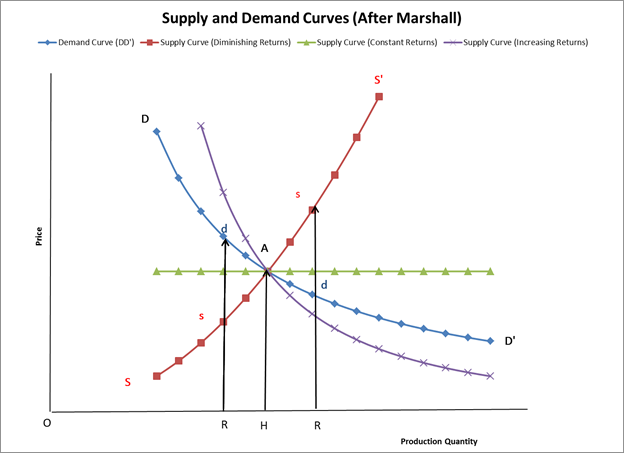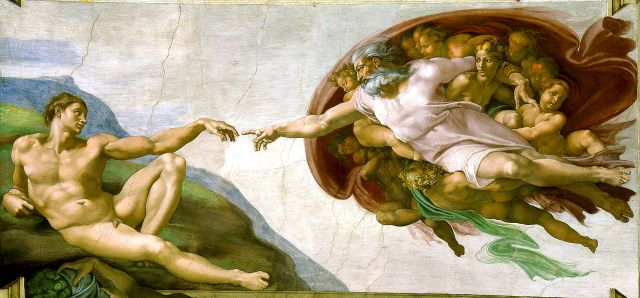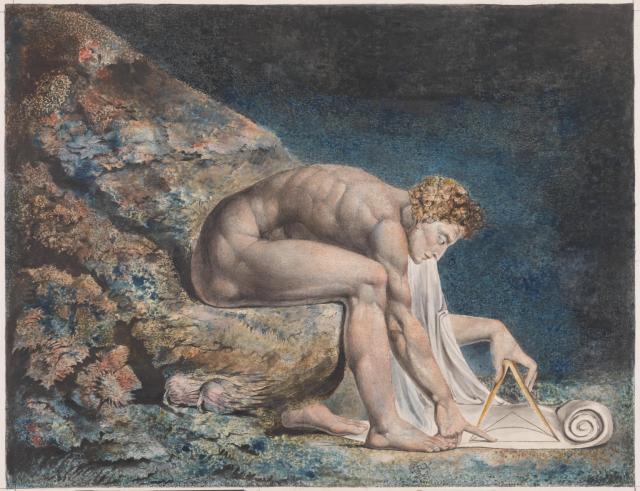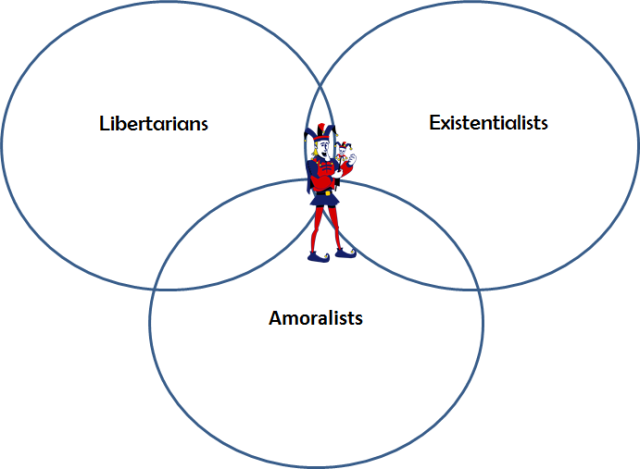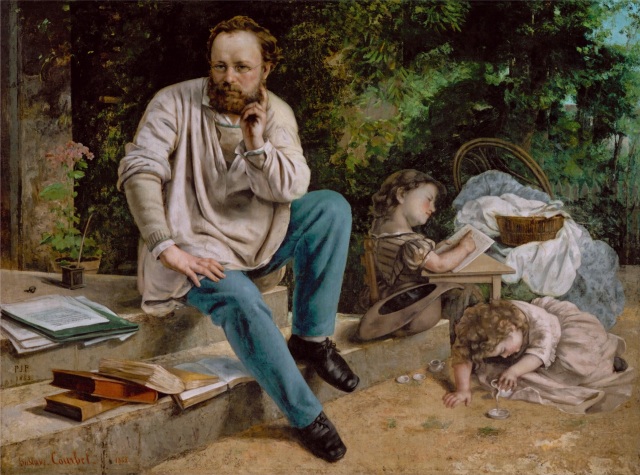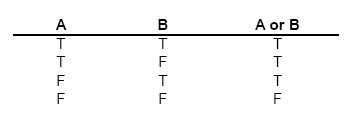Paul Mason’s 2015 book, Postcapitalism A Guide to Our Future, provides a striking visualization of a possible exit from the disasters of our current capitalist world system to something else: a more life-affirming, empathetic, creativity-fostering and fun world of cooperative progress. But before we get there, we need to manage a couple of problems that capitalism has created for us which present, as the title to Mason’s penultimate chapter suggests, a rational case for panic. And mind you, this book was published before the United States elected a mentally disordered narcissist with the vocabulary of a 4-year old as its President. These problems are, of course: climate change, debt overhang, demographic dynamics and automation.
The picture that Mason paints is starkly visible at the beginning of the twenty-first century. How will we possibly exit from an apparently inevitable conveyor belt to carbon pollution oblivion? How will an aging population maintain social peace? How will the reign of fiat money end? How will we “earn a living” when information and the products made from information have “zero marginal cost?” For me Mason’s book is marred by a really irrelevant homage to Marx’s labour theory of value. Irrelevant because what Mason visualizes is closer to the end visualized in Keynes’s “Economic Possibilities for our Grandchildren” than that in Capital. It is actually closer to the picture that a young Marx painted in the Grundrisse in the famous “Fragment on Capital” and then ignored or abandoned in Capital. This is the problem that if machines become fully implemented in our economy there becomes less and less need for the labour that Marx and Mason imagine is the source of value. But let’s get to those problems that capitalism has thrown at us first.
Climate Change
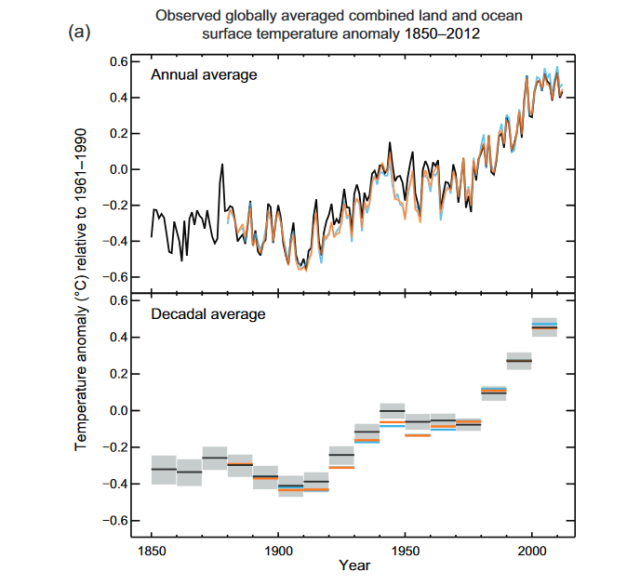 The scariest problem is clearly climate change. According to the International Panel on Climate Change, our climate has warmed by approximately one degree Centigrade since the beginning of the twentieth century. That is nearly 2 degrees Fahrenheit. The World Resources Institute projects that 90% of coral reefs will be in danger by 2030 and all of them by 2050, due to ocean warming and acidification. Sea level rise is has recently been projected at over 8 feet by 2100 resulting from melting of land ice in the polar regions. These changes will clearly have devastating effects on the lives of those that follow us. The oceans provide livelihood for tens of millions of us. Our coastal cities will need total rebuilding or abandonment as sea levels rise. These problems are already happening. What can be done to prevent them from doing the most damage?
The scariest problem is clearly climate change. According to the International Panel on Climate Change, our climate has warmed by approximately one degree Centigrade since the beginning of the twentieth century. That is nearly 2 degrees Fahrenheit. The World Resources Institute projects that 90% of coral reefs will be in danger by 2030 and all of them by 2050, due to ocean warming and acidification. Sea level rise is has recently been projected at over 8 feet by 2100 resulting from melting of land ice in the polar regions. These changes will clearly have devastating effects on the lives of those that follow us. The oceans provide livelihood for tens of millions of us. Our coastal cities will need total rebuilding or abandonment as sea levels rise. These problems are already happening. What can be done to prevent them from doing the most damage?
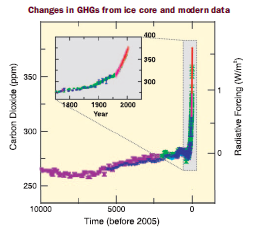
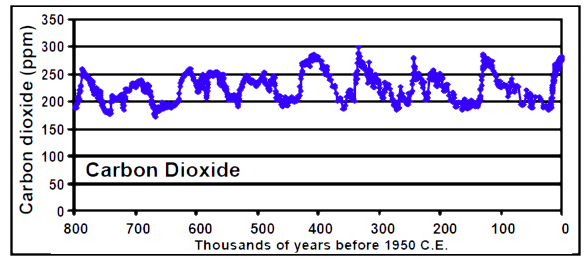
The average carbon dioxide concentration in our planet’s atmosphere just reached 400 parts per million (See here.) US Department of Energy measurements of ice cores have shown that Earth’s atmospheric carbon dioxide concentration had not been greater than 300 parts per million for 800,000 years prior to 1950. Almost all climate scientists that are not working for the fossil fuel industry understand that global warming, sea level rise and ocean acidification are due to burning of fossil fuels which transform reduced carbon buried millions of years ago into carbon dioxide, which is a greenhouse gas. It is the burning of fossil fuel that causes global warming, sea level rise and ocean acidification. There is no other cause that accounts for the effects that we have seen. (See the IPCC reports, for example, or US EPA pages put together before they are deleted by the Trump administration.)
This is a really scary prospect and it is clear that capitalism is the reason it is so difficult to manage. Why? Simply because capitalism is based on a system of “free trade” and “free enterprise” that ignores “externalities.” In a pure capitalist state, there is no penalty for dumping pollution into the commons. In such a world, the capitalist makes a rational case that the long-term damage done to others will not come back to harm him, leaving him free to enjoy the profits from his investments in the short term. Of course, as Karl Polanyi made clear, such pure capitalism could not long exist. The horrors of Dickens’s Victorian Age for the poor have since his time been ameliorated to some extent by countervailing actions in the public interest by governments. The problem with climate change is that the interventions required to curb it are staunchly resisted by the owners of fossil fuel companies who have in the past been subsidized by these same governments and have sufficient power to influence these governments to not take actions that clearly are needed to avert catastrophe.
Mason has a clear vision of the problem. He references the International Energy Administration, which writes,
“Policy choices and market developments that bring the share of fossil fuels in primary energy demand down to just under three-quarters in 2040 are not enough to stem the rise in energy-related carbon dioxide (CO2) emissions, which grow by one-fifth. This puts the world on a path consistent with a long-term global average temperature increase of 3.6°C. The Intergovernmental Panel on Climate Change estimates that in order to limit this temperature increase to 2°C – the internationally agreed goal to avert the most severe and widespread implications of climate change – the world cannot emit more than around 1000 gigatonnes of CO2 from 2014 onwards. This entire budget will be used up by 2040 in our central scenario. Since emissions are not going to drop suddenly to zero once this point is reached, it is clear that the 2°C objective requires urgent action to steer the energy system on to a safer path.”
The same IEA document estimates that world-wide fossil fuel subsidies in 2014 were $550 billion, four times more than subsidies for renewable energy sources.
So how will this possibly not end badly? Well, Mason is not convinced that “market solutions” like carbon taxes will be effective in ameliorating the worst consequences of climate change. What then? He writes,
“However, to meet the critical emissions targets we are going to have to use some centralized control. Governments – at state and regional level – will need to take control, and probably ownership, of all big carbon producers. As the energy distribution grid becomes ‘smart’, using technology to predict and balance supply with demand, it makes sense for the grid to be a public resource.”
To this I say, “Here, here!,” but based on personal experience, trying to convince a status quo clinging community to purchase its own electrical distribution infrastructure from a fossil fuel giant is a daunting task, and this much less than trying to socialize the failing energy companies themselves.
Demographics and Government Debt
Mason points out that the world’s populations are aging fast.
“Globally, the population of older people to those of working age will increase. In 1950, 5 percent of the world’s population was over sixty-five; by mid-twenty-first century it will be 17 percent. . . . the crucial problem is the age dependency ratio: the number of retired people compared to the number of those of working age. In Europe and Japan, there are currently three workers for every one retired person. By 2050 the ratio will be one-for-one. And though most developing countries will continue to have mainly young populations, China bucks the trend due to its one-child policy. By 2015 China will be the ‘oldest’ of the big economies in the world, with a projected median age of fifty-three.”
The problem that Mason sees is that debt overhang caused, he thinks, by replacement of the gold standard by fiat money, has been part of a run-up in stock market pricing that cannot continue, resulting in great threat to pension funds. With an aging population and slower growth and a smaller workforce, this seems a spiral to impoverishment. With more than 50 percent of all private pension money invested in government debt, 40 percent of this foreign owned, “No matter how safe a company pension fund looks now, if 60 percent of all countries’ bonds become junk – so that to lend to them becomes a crazy proposition – the private pension system will not survive.” He says, “Are you panicking rationally, yet?”
The Four Waves and Wayward Bolsheviks
Mason is very fond of the Soviet economist Nikolai Kondratieff, executed by firing squad in his cell in a Stalinist prison in 1938. Kondradieff’s
“real crime, in the eyes of his persecutors, was to think the unthinkable about capitalism: that instead of collapsing under crisis, capitalism generally adopts and mutates. In two pioneering works of data-mining he showed that, beyond short-term business cycles, there is evidence of a longer, fifty-year pattern whose turning points coincide with major structural changes within capitalism and major conflicts. Thus, these moments of extreme crisis and survival were not evidence of chaos but of order. Kondratieff was the first person to show the existence of long waves in economic history.”
Mason sees four major waves in modern capitalism up to our current (fifth) era:
1) 1790-1848: The rise of the factory system with steam-powered machinery and canals. Peaking and then leading to the depression of the 1820s.
2) 1848-1890s: Railways, the telegraph, ocean-going steamers, stable currencies and machine-produced machinery set the cycle into upwards motion. The wave peaks in the 1870s with financial crisis in the United States and a Long Depression (1873 – 96) in Europe.
3) 1890s-1945: Heavy industry electrical engineering, scientific management and mass production start a new wave upwards. The break occurs at the end of the first world war leading to hyperinflation in Germany and the Great Depression.
4) Late-1940s – 2008. Synthetic materials, mass consumer goods, factory automation, nuclear power and computing start les trente glorieuses. The peak is the oil shock of 1973 leading to a period of instability.
5) Late 1990s to present: Overlapping with the previous wave, network technology, mobile communications, truly global marketplace and information goods start a new wave upwards. But this cycle has stalled, according to Mason, who thinks it will not lead to a new wave without a structural change to capitalism.
Mason is well schooled on Kondradieff and clearly admires him, along with other wayward Bolsheviks like Trotsky and Alexander Bogdanov. Bogdanov was the author of the “vintage sci-fi novel”, Red Star, about a world on Mars where there are no labor shortages and no money, an early visualization of a postcapitalist world. He was a founding member of the Bolshevik party who was ousted after a disagreement with Lenin. Mason says of him, “Though he could not imagine a computer, he had imagined the kind of communism that society based on mental labor, sustainability and networked thought might produce.” What a thought!
The Robots
A good part of Mason’s book (in especially the important 5th chapter, “The Prophets of Postcapitalism”) is devoted to visualizing what happens in our societies as machines become smarter and more capable to the extent that livelihoods based on unskilled human labor become untenable. Mason discusses important contributors to analysis of this subject by Peter Drucker, Schumpeter, Paul Romer and Marx; especially an apparently anachronistic work of his youth, from the Grundrisse, “The Fragment on Machines.” I will just discuss the latter. In this fragment, contained in the collection of notes for a future work, Marx addresses the question of what would happen if the tendency of machines to replace manual labour were extended to its logical conclusion: a world without labour.
This fragment starts out mixed up in Marx’s current version of the labour theory of value, roughly that Ricardo’s three factors of production; land, labour and capital, really boiled down to just labour (neglecting land, given by nature, the story goes) since it takes labour to make machines and build capital. But then Marx says,
“Further, in so far as machinery develops with the accumulation of society’s science, of productive force generally, general social labour presents itself not in labour but in capital. The productive force of society is measured in fixed capital, exists there in its objective form; and, inversely, the productive force of capital grows with this general progress, which capital appropriates free of charge.”
So what happens when information (“general progress”) is free and machines can make themselves as well as all of the products that you may want? He says, “Capital thus works towards its own dissolution as the form dominating production.” What replaces capital (and remember Marx still sees fixed capital as consisting of labour) is information, the general progress of science which can be owned by no one.
Mason sees this as somehow explained by the labour theory of value. I will address my puzzlement (and appreciation) at this in what follows.
The Labour Theory
Chapter 6 of Mason’s book presents his extended remarks on the labour theory of value (LTV). In the words of Adam Smith,
“It was not by gold or by silver but by labour that all of the wealth of the world was originally purchased and its value, to those who possess it, and who want to exchange it for some new productions, is precisely equal to the quantity of labour which it can enable them to purchase or command.”
Mason admits that Smith assumes that this labour-only theory of value applied to primitive societies and that in the newly industrializing world of Smith’s late 18th century it was rather a combination of land, labour and capital that produced things of value. But he insists that Smith was rather being inconsistent. He gives the standard paragraph on Ricardo’s theory saying that “Ricardo, who had witnessed the great upsurge of the factory system, ridiculed the idea that machines were the source of increased wealth. Machines merely transfer their value to the product; only labour adds new value.”
Walras, who strongly contradicted Ricardo’s LTV, is mentioned, not for his insistence on scarcity as the source of value which he (and I) think was his major contribution; but as one of the founders of the marginal utility school, which is the basis for most all of the economics that followed. Actually, Walras pointed out that Ricardo had admitted that scarcity had an impact on the value of certain types of products like works of art and fine wines. His critique of Ricardo was not that he was wrong for these types of products, but that he failed to see that scarcity is involved in the valuation of ALL products.
I have discussed the LTV in another post. The figure above comes from that post. The figure derives from Alfred Marshall’s famous economics textbook. The various elements of the chart are explained in that prior post. I want to point out just one thing about this here. The chart shows a demand curve and supply curves assuming different types of return on scale. The important thing to note is that the pure LTV has a horizontal supply curve: the quantity of labour is the only thing that determines the cost of production, according to this pure theory. So the price that would be commanded in the market is indifferent to demand. If we were producing a product that no one wanted, the value of that product by the pure LTV would be the same as if it were in great demand.
Clearly we know that this is not the case. A product that no one wants has no value, no matter how much labour went into making it. Marx, of course, was also aware of this objection. To get around it he developed an ingenious ruse (in my view), the concept of “socially necessary labour time.” The basic idea is that the value of a product is the cost of labour to produce it only for products that have social value and includes all of the other things that went into its production. Except that Marx assumes that land has not value and that capital is only stored labour. So he gets back to labour as the source of all value. And a demand curve is smuggled in by the back door.
Mason explains socially necessary labour time by example:
“If we know what an hour of basic labour costs – in Bangladesh the minimum wage pays about 28 US cents an hour – we can express it in money. Here I will just stick to hours. Two things contribute to the value of a commodity: (a) the work done in the production process (which includes marketing, research, design, etc.) and (b) everything else (machinery, plant, raw materials, etc.) Both can be measured in terms of the amount of labour time they contain.”
Again, the assumption here is that land, raw materials, energy and capital have value only to the extent that they are the product of labour alone. A brilliant idea, except that it seems to me to be a simple example of petitio principii, the fallacy of assuming as a premise a statement which has the same meaning as the conclusion. Labour is the source of all value, because labour is the source of all value. This apparent fallacy becomes all the more striking since elsewhere in Mason’s book he uses the vocabulary of the marginal revolution in making his case that information processing presents us with the prospect of machines that last forever, as had been anticipated by Marx in the “Fragment on Machines.” A result of that would be that more stuff created by those machines would have “zero marginal cost” and that the LTV helps us to understand this. Let’s forget the irony, for the moment, of using insights from the marginal cost revolution of the late nineteenth century to defend a theory of value from the 18th century. But this is the crux of Mason’s argument.
He proposes a thought experiment of putting into a spreadsheet the costs, accounted in terms of labor time (of course), and iterating it as machines become more efficient and longer lived over time. He proposes a model with four initial cost elements:
1) Capital: 200 (labour units)
2) Energy: 200
3) Raw materials: 200
4) Labour: 200
As the spreadsheet is iterated the amount of labour time going into capital decreases along with the labour. Eventually these shrink towards “zero marginal reproduction costs.” We could even go further by assuming that some very smart robotic machines could make equipment (that lasts forever) to make solar energy and dig raw materials out of the ground. Wouldn’t the cost of these elements also head towards zero marginal cost? And then the whole production would tend to zero marginal cost. Mason thinks that this is why the LTV is so good. It is the only theory, he maintains, that can explain the difficulty in pricing things under conditions of improving productivity. But is it? And under such conditions why would we worry about pricing at all?
I have discussed Walras’s critique of Ricardo and Marx’s versions of the LTV. His main point against both theories was that under conditions of scarcity, it is relative scarcity that determines price. But what about conditions where there is no scarcity? What about conditions where it is no longer necessary for us to “earn a living,” that living having been earned by the accumulated knowledge of generations past? Now this is a very important question to ask and I very much appreciate Mason’s prolonged evaluation of it.
It reminds me of the old depression era song, “Big Rock Candy Mountain.”
There ain’t no short-handled shovels,
No axes, saws nor picks,
I’m bound to stay
Where you sleep all day,
Where they hung the jerk
That invented work
In the Big Rock Candy Mountains …
I’ll see you all this coming fall
In the Big Rock Candy Mountains.
The great virtue of Mason’s book is to visualize this possible world. And we don’t need to just sleep all day. We could all be reading Homer and Plato and Darwin and talking about it all day with other “universal educated persons,” described by Drucker in HIS 1993 book Post-Capitalist Society and quoted by Mason.
Hannah Arendt, in her magnificent book, The Human Condition, divided our situation into categories as follows:
Animal laborans, the laboring animal
Homo faber, man the maker
Vita contempletiva, the meditative state of the sage
Vita activa, the life of the human on the political stage
At any one time, humans find themselves living one or more of these lives. I think Arendt made no mystery of her preference for the last, the life of the human active on the public stage in some form or other. The LTV, on the other hand, elevates the first, animal laborans, to the highest position. This is the proletariat, the vanguard of change in Marx’s rhetoric. Animal laborans was for Marx the lever arm to a better world. But did Marx himself live this life? Actually no. He lived the vita activa as a revolutionary leader and speaker and worked toward the goal of the Big Rock Candy Mountain in hours of toil at the British Museum, supported by the profits from Engel’s family factory. Why is animal laborans the model for the human condition?
For me, a life lived in Arendt’s last two categories is the highest form of value. I have lived the other two as well, but I would be happier in the Big Rock Candy Mountain than in “bullshit jobs” (one of Mason’s best phrases). And if we are heading to a Big Rock Candy Mountain world, and I surely hope we are, what use will we have of the LTV? Something to have a think on.
The Rest of the Story

OK. The vision of The Big Rock Candy Mountain is great, but the real scene in the cities of the United States looks more like this. Those that don’t work at “bullshit jobs” and don’t have trust funds are suffering. In the Global South things are so much worse. How do we get from the increasingly unequal societies in which we live to ones that are more equitable, cooperative and creative? Mason’s last chapter, “Project Zero” describes his vision for a transition from our world that is lousy for so many to one that is better.
He proposes five principles of transition:
- Understand the limitations of human will power in the face of a complex and fragile system. Test solutions at small scale and model them before trying them at full scale.
- Ecological sustainability. This one is obvious. We need to stop burning fossil fuels, control our populations and develop and put into place renewable energy sources.
- We have to have a human transition. We have to develop some courage in our populations to challenge the status quo.
- Attack the problem from all angles.
- Maximize the power of information.
The “internet of things” is a vast social network. How do we avoid “siloing” this information into the hands of profit-seeking corporations and liberate the spread of information? We need networks that are vibrant, but also open.
His goals for the end game are bold:
- Rapidly reduce carbon emissions
- Socialize the finance system
- Equalize prosperity
- Replace bullshit jobs with human development
Are these impossible given the realities of the power of violence and propaganda in the hands of global elites? I will leave it to the reader to explore how she approaches this. Mason mentions the obvious things: expand the spread of open source knowledge, expand collaborative work, socialize monopolies, cultivate non-market productivity and pay everyone a basic income.
Can this ever be achieved? We’ll see, but it is important to visualize goals more explicitly than Marx did in the Critique of the Gotha Program. In my view, Mason has made a good effort. The rest is up to us.

